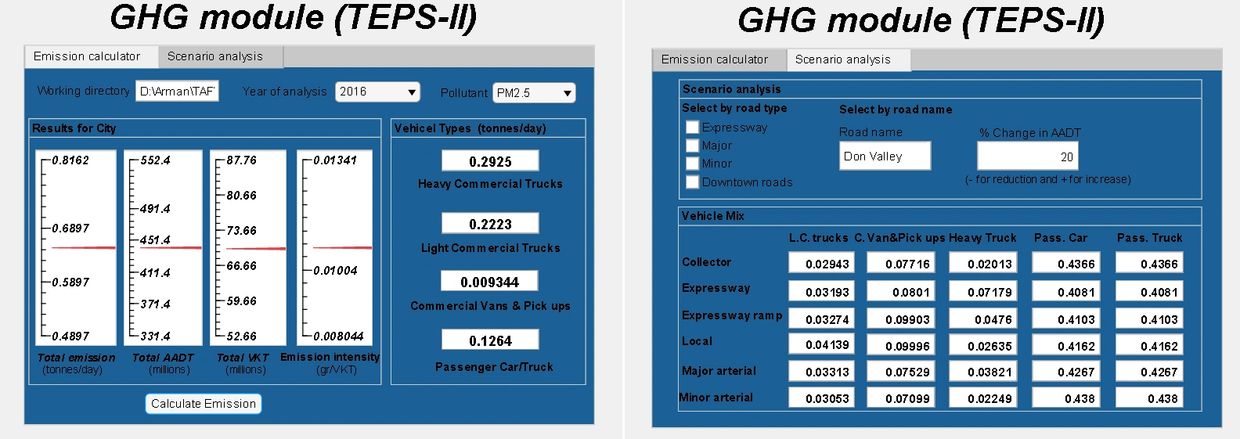TEPs-II

An interface with scenario analysis tools for GHG, NOx and PM2.5

TEPs-II
Overall structure
TEPs-II trains a Neural Network based learning algorithm to mimic the output of a user equilibrium traffic assignment model and to reproduce a relationship between vehicle speed and AADT. The trained model is then used to predict vehicle speed from TEPS-I. Road emissions are estimated based on average speeds, predicted volumes, and average-speed emission factors (EFs).
This project was supported by The City of Toronto's Transportation Services Division and Atmospheric Fund
Copyright © 2019 Traffic Emission Prediction scheme (TEPs) - All Rights Reserved.
Updated on Feb 28, 2019